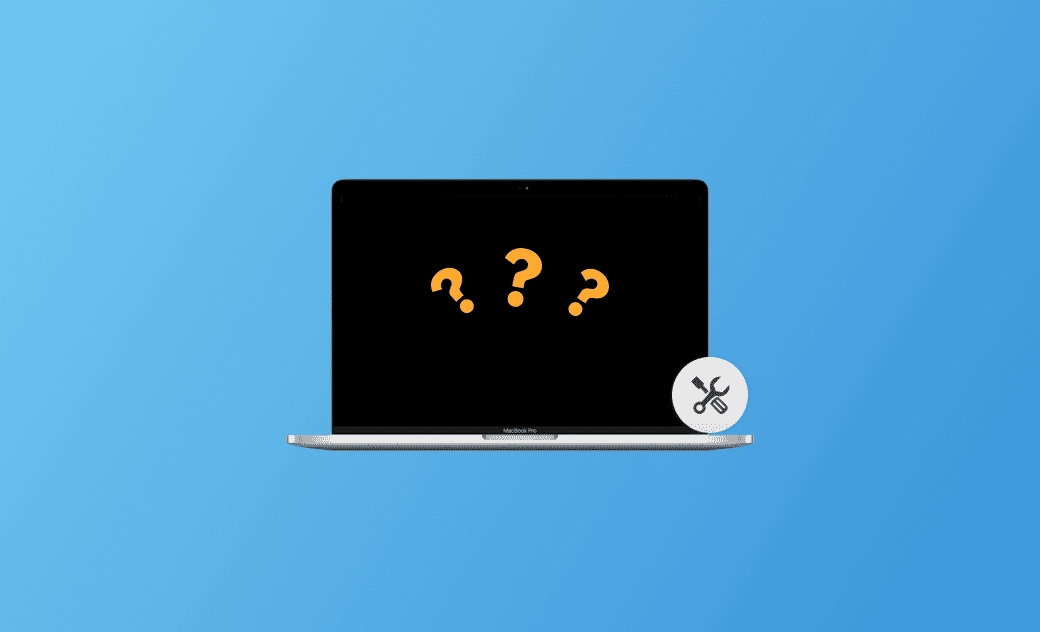macOS Tahoe Black Screen? Try These 8 Fixes
This post explores the possible causes and solutions for a MacBook black screen, especially after updating to macOS Tahoe. Read on for detailed guidance!
"I tried to start my MacBook Pro after an interrupted macOS update. Now I have a black screen and can't see anything."
- A Question from Apple Community.
Experiencing a black screen on your MacBook can be frustrating, but it’s not uncommon. Many users report encountering this issue, particularly after upgrading to macOS Tahoe.
Don't worry! This guide provides practical tips to fix the black screen issue on macOS Tahoe and explains how to prevent it. Keep reading!
Why Is My MacBook Screen Black?
The common reasons for a black-screen MacBook include:
- Crashed apps
- Power issues
- Insufficient storage space
- macOS Tahoe bugs
- Corrupted startup disk
- Hardware problems
- Display issues
How to Fix a MacBook Black Screen
Before visiting a repair store, there are several steps you can try at home. Below are 8 effective methods to resolve a black screen on macOS Tahoe.
1. Check Your MacBook's Power
A MacBook won't turn on if it doesn't have enough power. If your MacBook Air or Pro is completely drained, it may display nothing but a black screen.
Check your MacBook's battery and power connection. Plug in your charger and see if it resolves the issue.
2. Restart Your Mac
A black screen can sometimes be caused by temporary system errors or update bugs. Restarting your Mac often resolves these issues.
If a normal restart doesn’t work, press the Power button to force restart your Mac.
3. Disconnect Any Peripherals
External devices can sometimes interfere with your MacBook’s display, especially when using an external monitor. M1 Macs, in particular, are reported to experience black screens more frequently with external displays.
Disconnect all peripherals and check if your MacBook returns to normal.
4. Reset PRAM or NVRAM
On Intel-based Macs, resetting PRAM (which stores settings in NVRAM) can fix configuration issues.
How to reset PRAM:
- Shut down your Mac.
- Turn it on and immediately press and hold Option + Command + P + R.
- Release the keys after about 20 seconds.
- Adjust any system settings that were reset, if prompted.
5. Run First Aid
A corrupted startup disk can cause a black screen. Running First Aid from macOS Recovery can repair disk issues. Remember to back up important data first.
Steps to run First Aid:
- Boot your Mac into macOS Recovery.
- Select Disk Utility and click Continue.
- Click the View icon → Show All Devices.
- Select the disk to repair → choose the last volume on that disk.
- Click First Aid and follow the on-screen instructions.
6. Boot in Safe Mode
Starting your Mac in Safe Mode can help determine if startup items or apps are causing the black screen. Safe Mode limits software interference and can help isolate the issue.
7. Use the MacBook Key Sequence
Some users report success using a specific key sequence:
- Press the Power button once.
- Press the S key (sleep hotkey) and then hold the Power button for a hard shutdown.
- Wait 15 seconds and press Power again to restart.
8. Reinstall macOS
If all else fails, reinstalling macOS can resolve persistent black screen issues. You can either reinstall macOS without erasing personal data or perform a clean install (erasing all data).
Reinstall macOS steps:
Step 1Shut down your Mac.
Step 2Start up from macOS Recovery.
Apple Silicon Macs:
- Press and hold the Power button until startup options appear.
- Click Options → Continue.
- Select your user (if prompted) → click Next → enter admin password.
Intel-based Macs:
Press the Power button.
Immediately hold one of the following key combinations:
- Command + R: reinstall the most recent macOS version.
- Option + Command + R: install the latest compatible macOS.
- Shift + Option + Command + R: install the original macOS or closest available version.
Release keys when the Apple logo or spinning globe appears.
Select Wi-Fi if prompted.
Choose your user → click Next → enter admin password.
Step 3Reinstall macOS from macOS Recovery.
- Click Reinstall macOS → Continue.
- Follow the on-screen instructions and the setup assistant.
Additional measures like adjusting brightness, performing power cycling, reopening display repair disks, or disabling FileVault in Recovery mode can also help resolve black screen issues.
Conclusion
This post provides 8 effective ways to fix a MacBook black screen. Use these methods to bring your Mac back to life safely.
Clare has been captivated by the world of Apple products since the launch of the iconic iPhone in 2007. With a wealth of experience, Clare is your go-to source for iPhone, iPad, Mac, and all things Apple.
